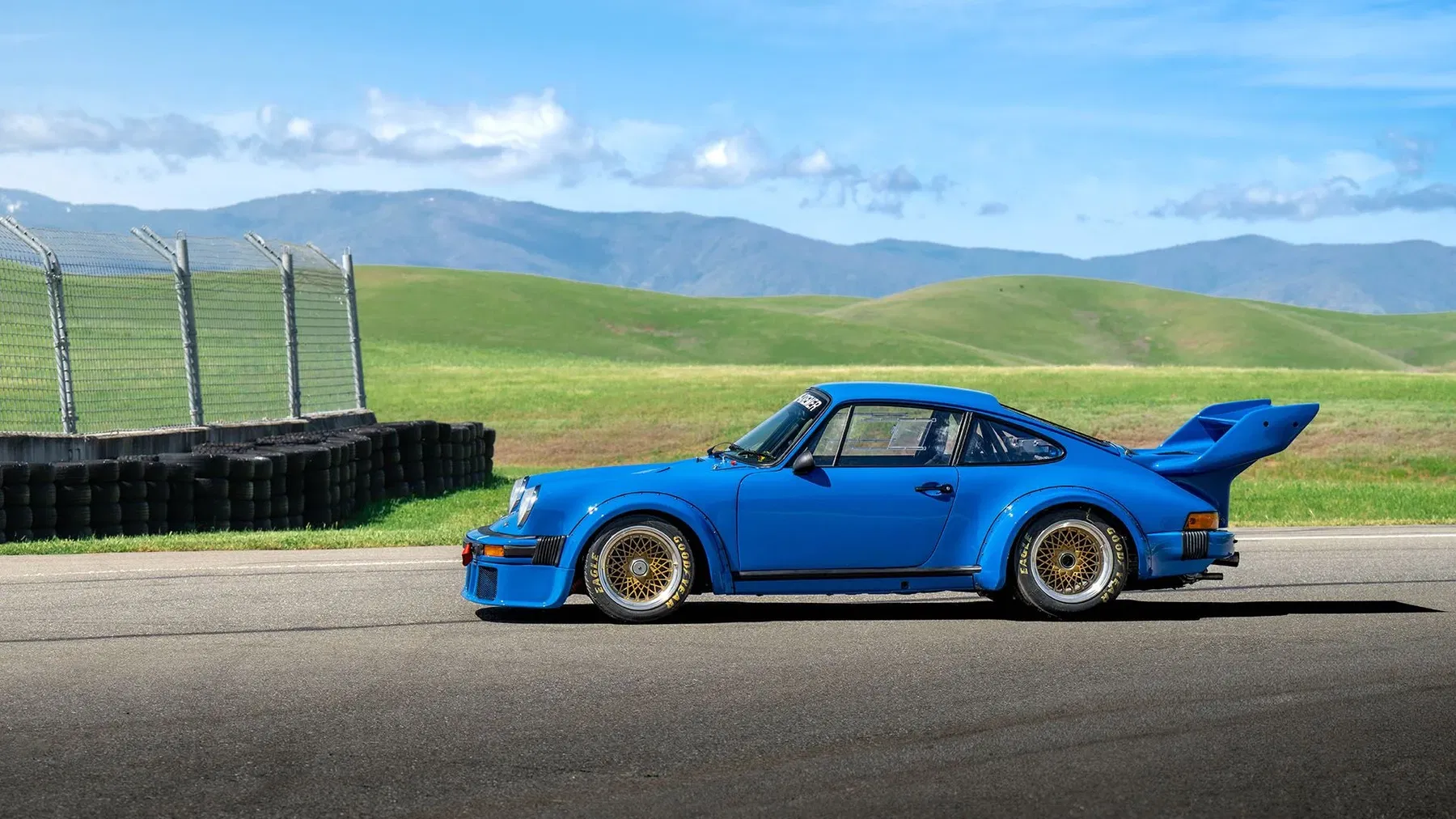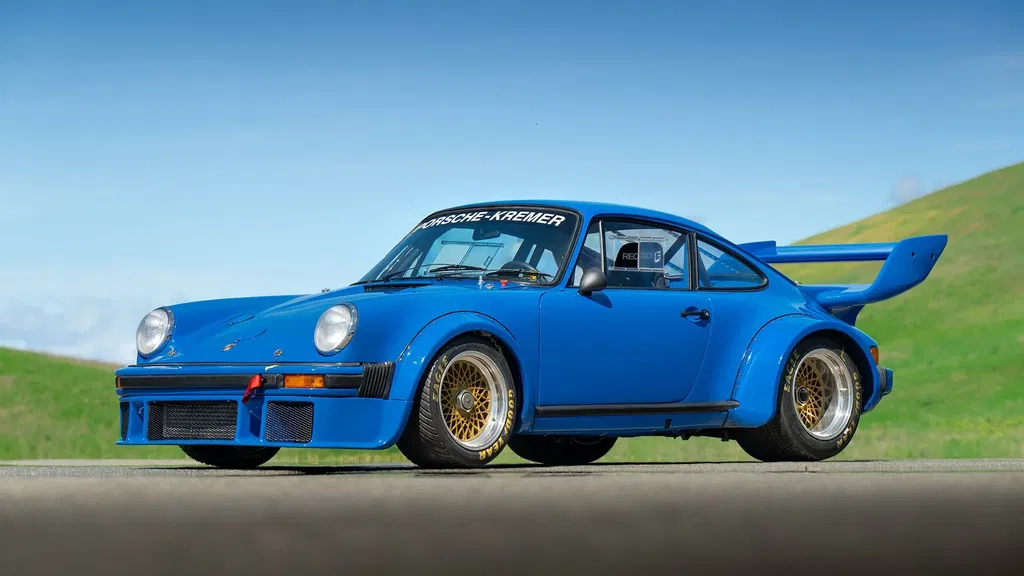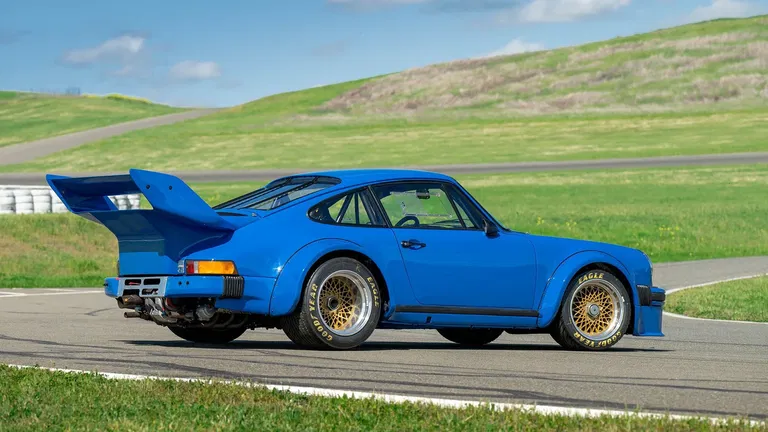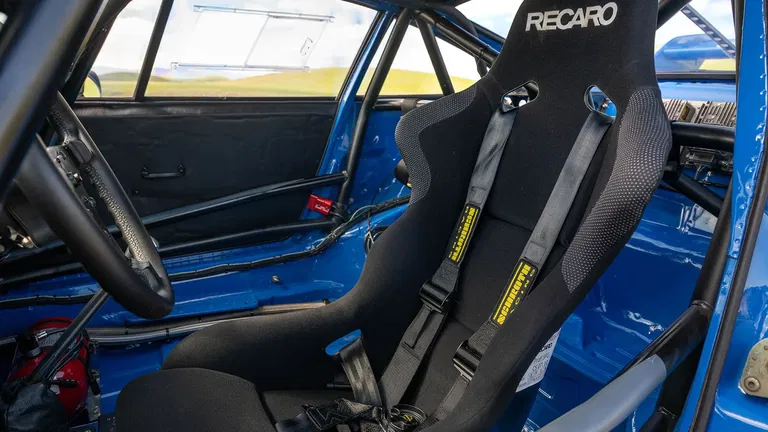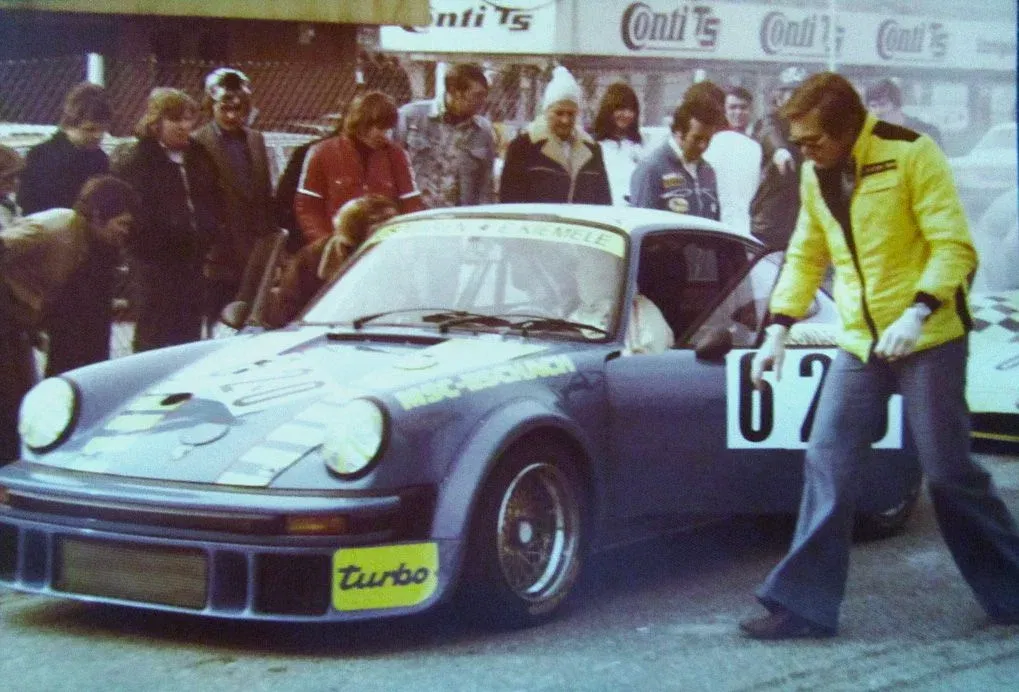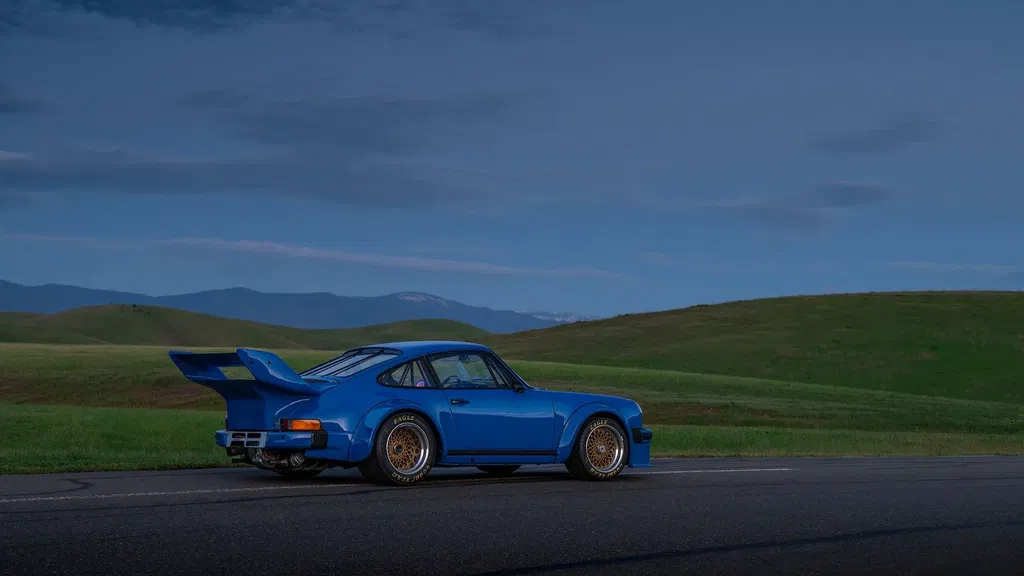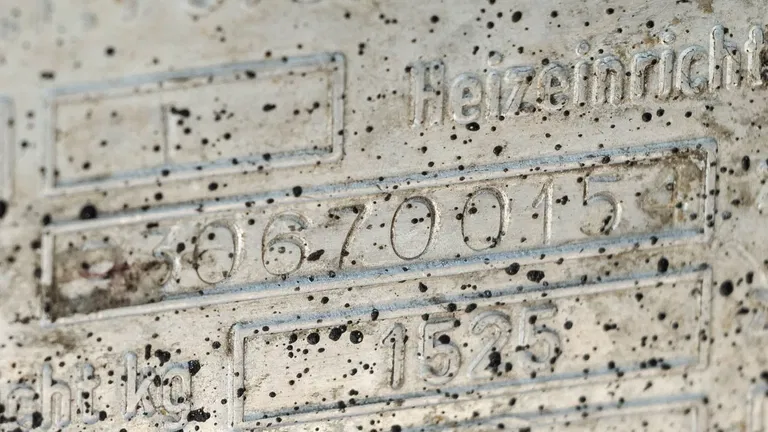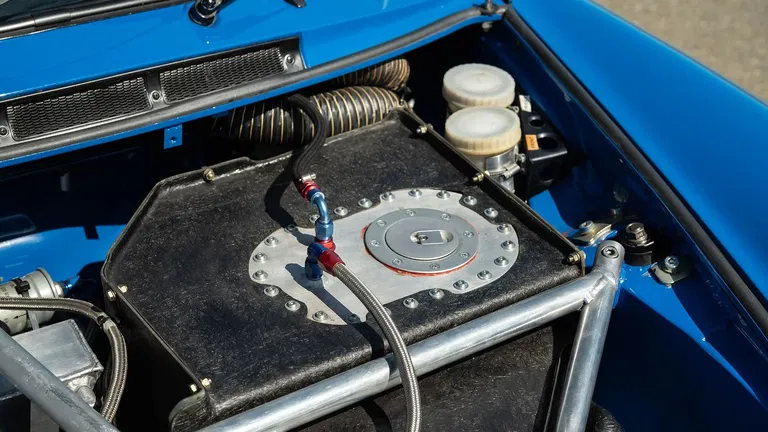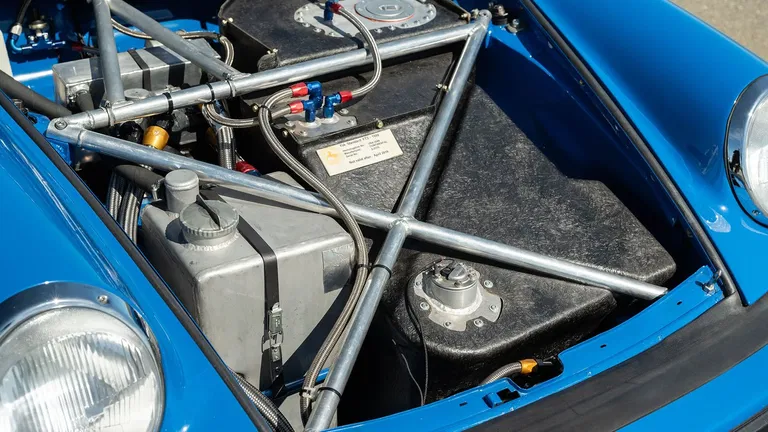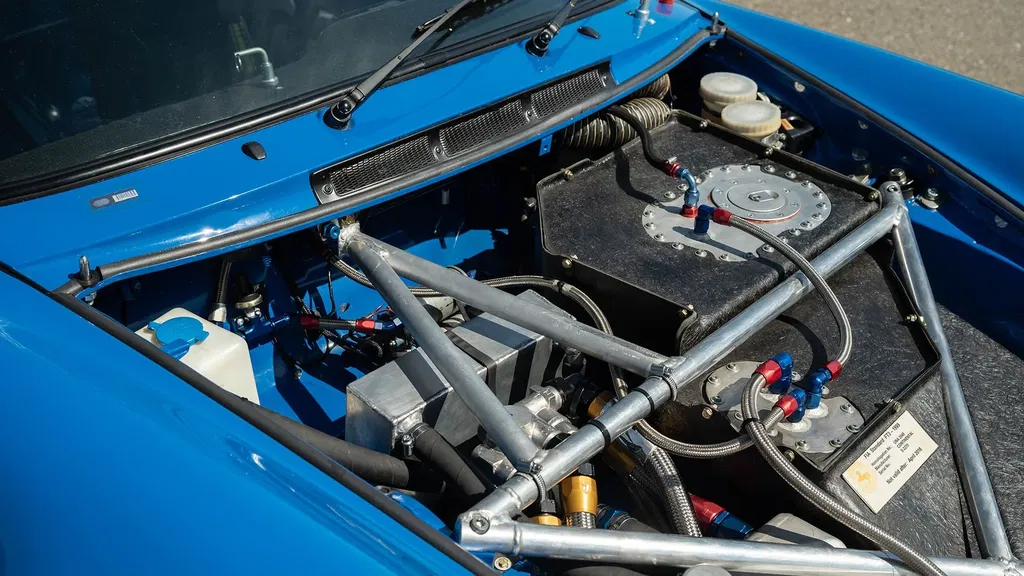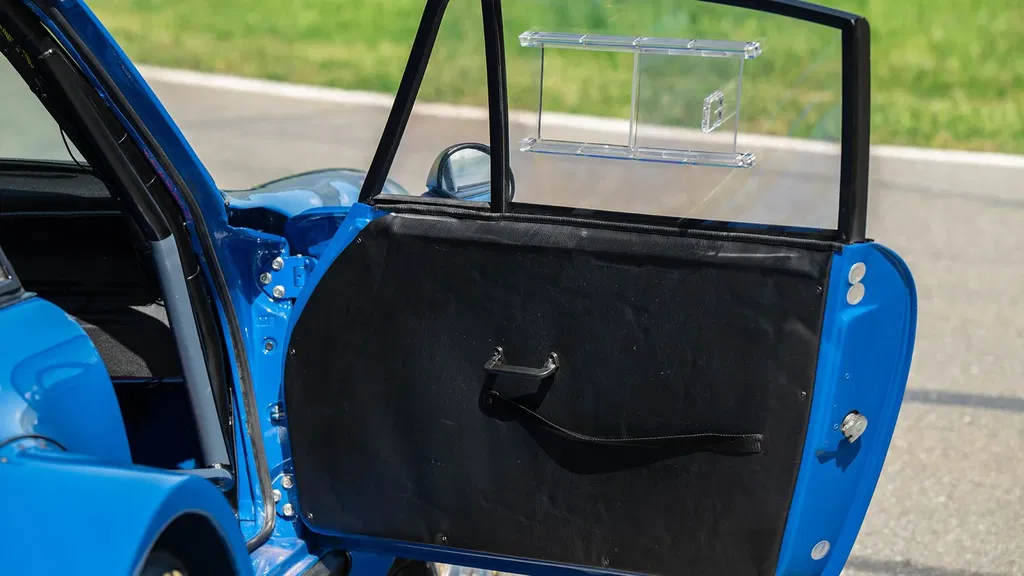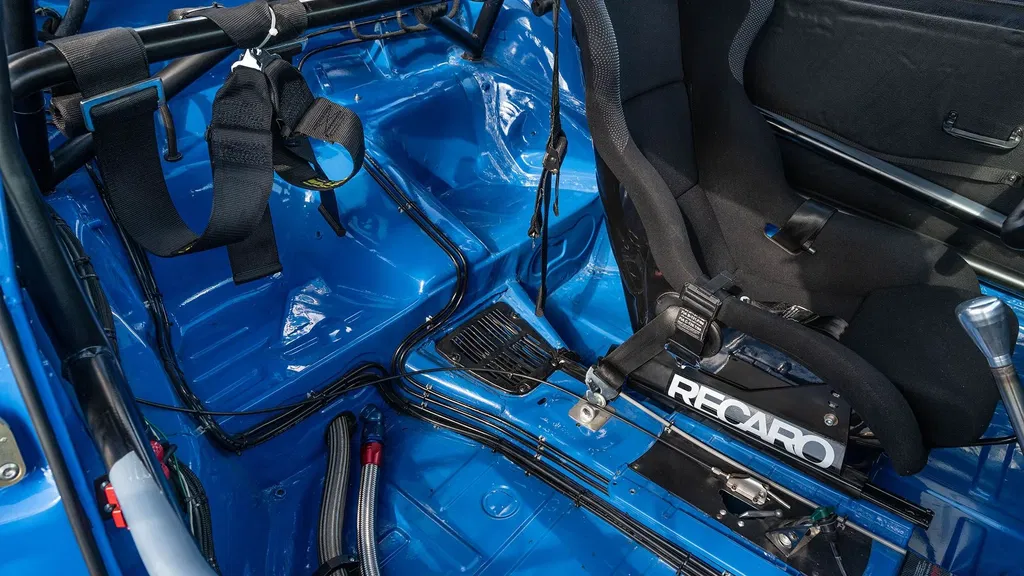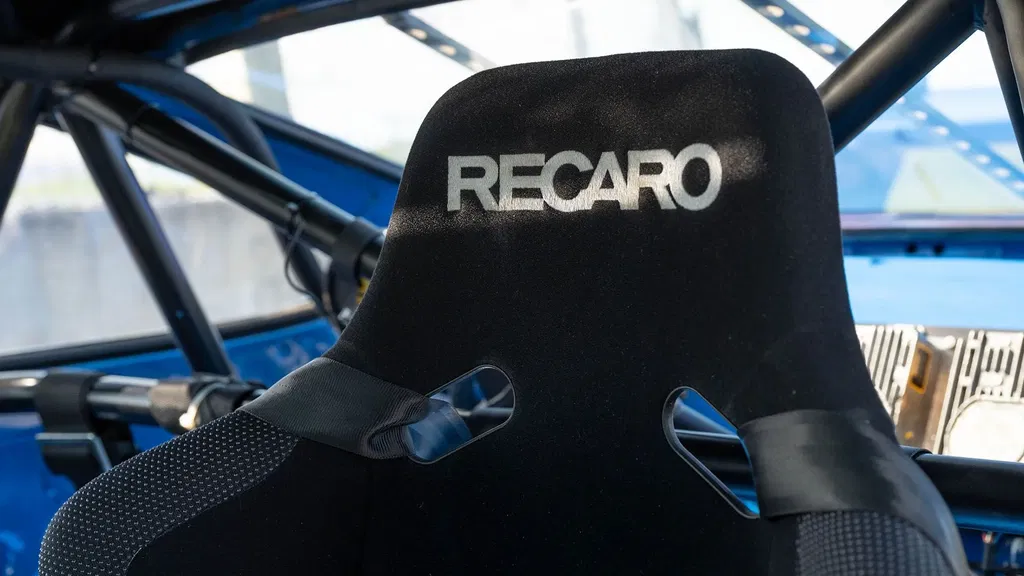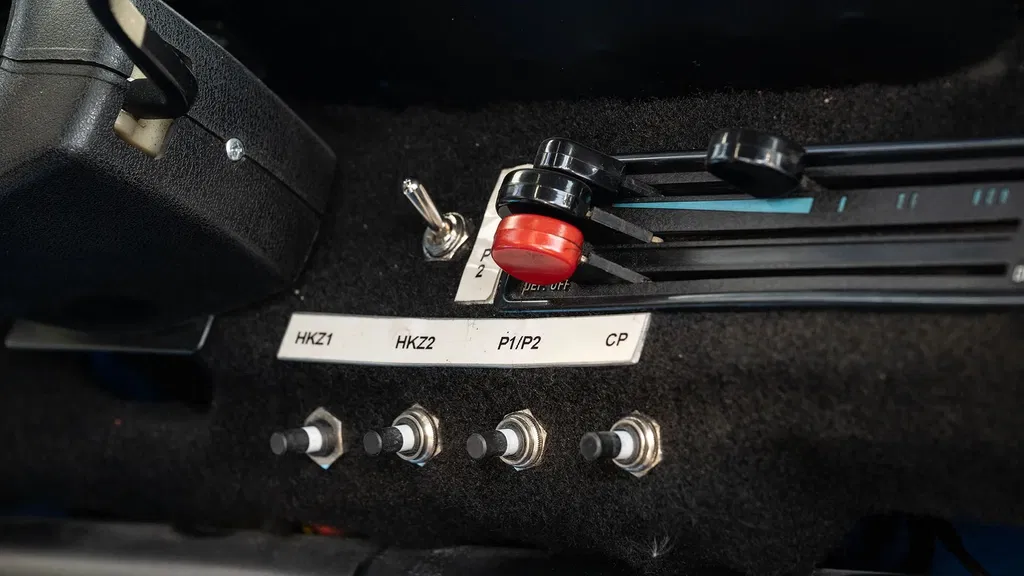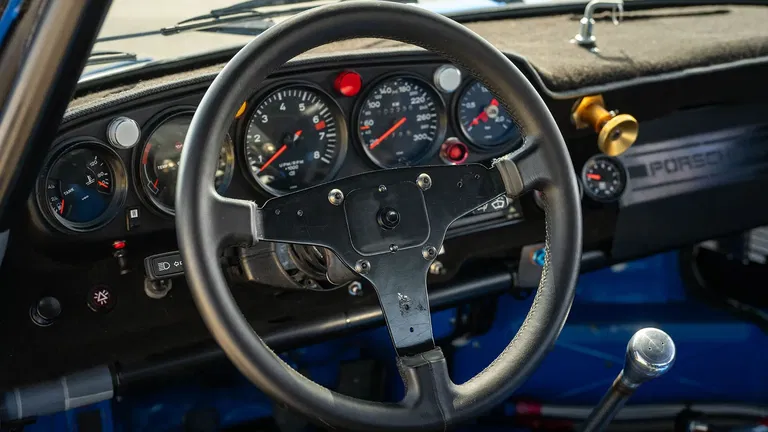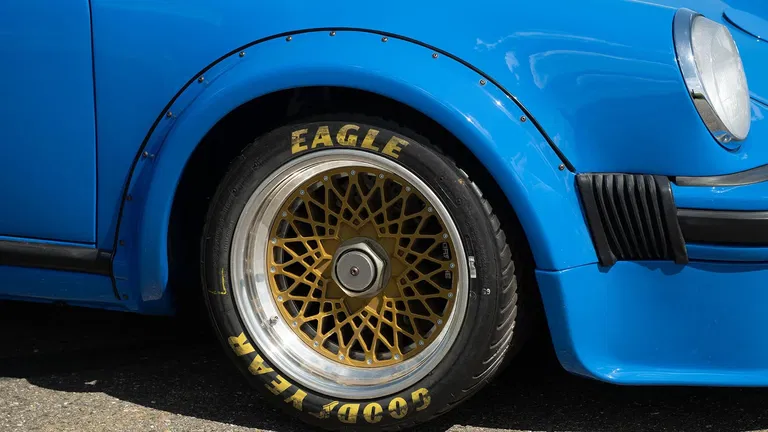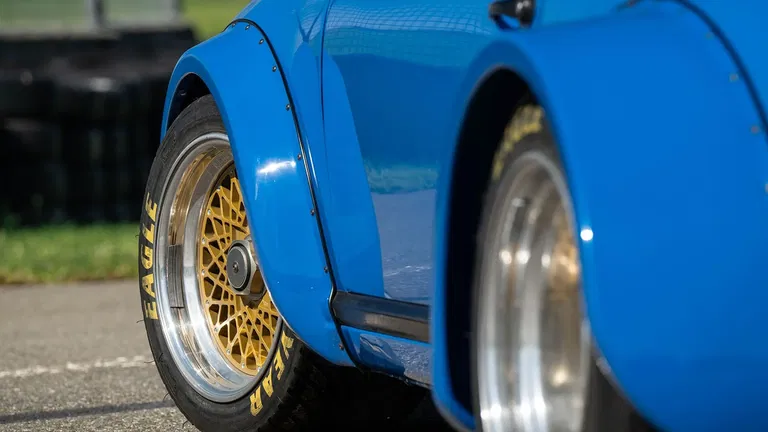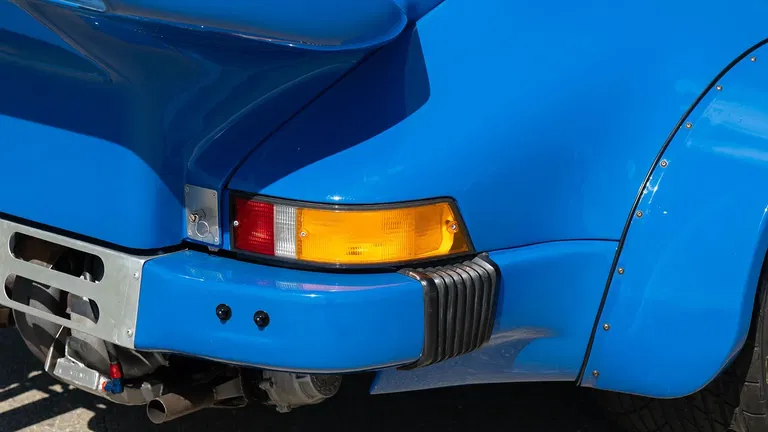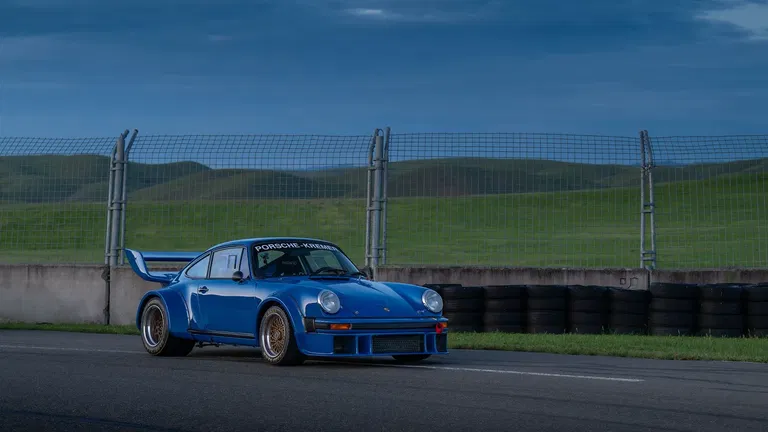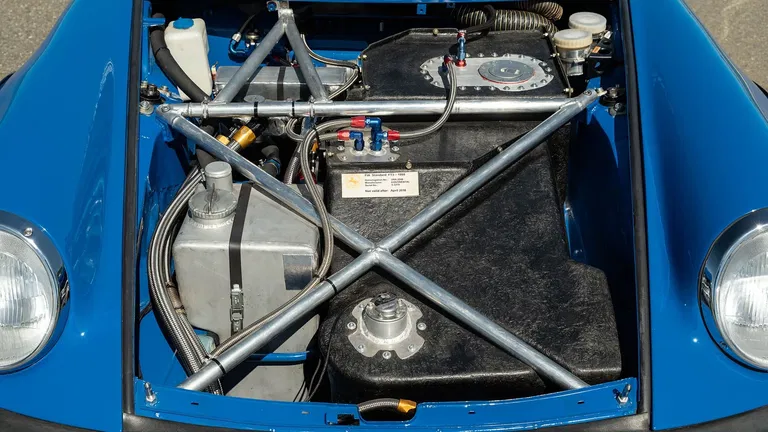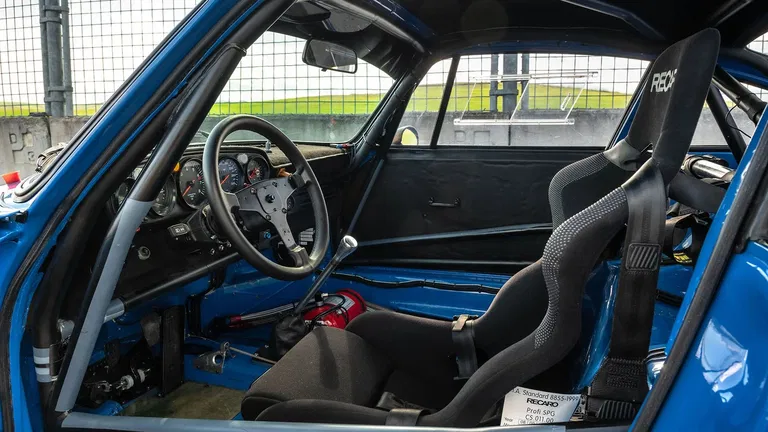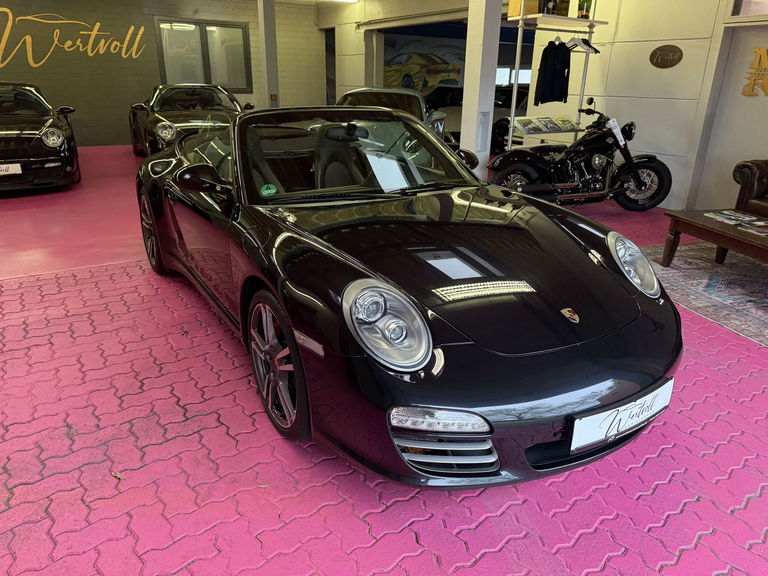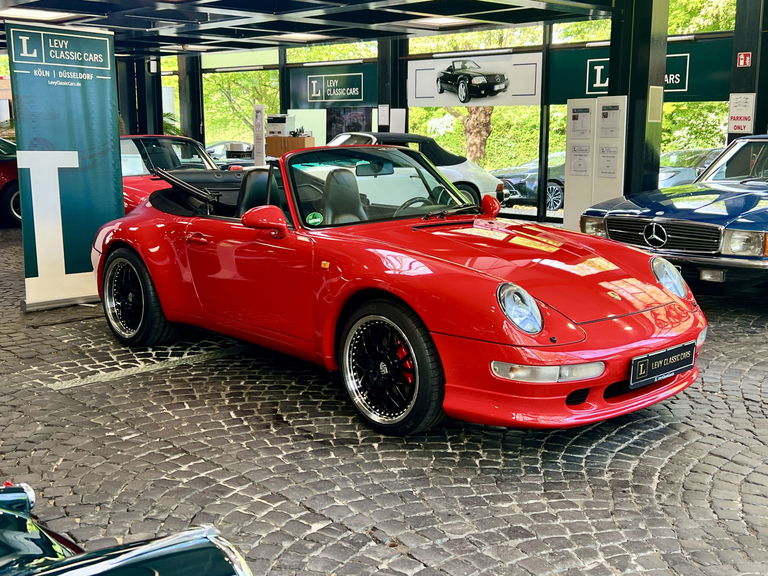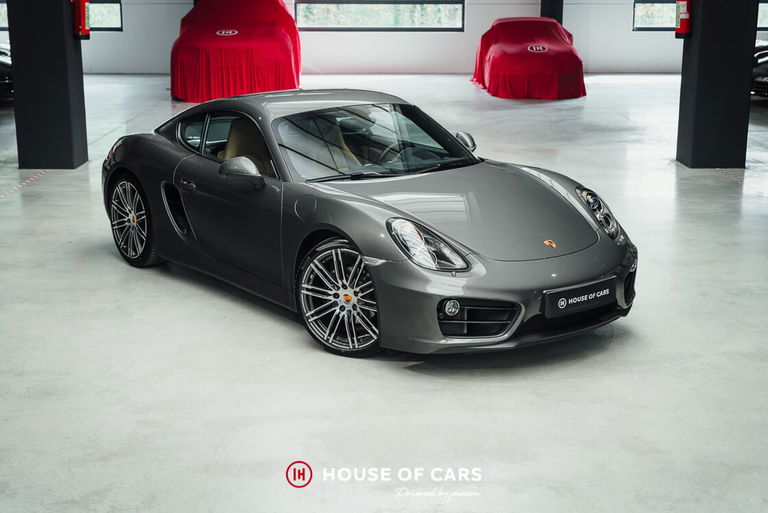By 1976 Porsche had been racing the 911 for nearly ten years. Born in an era of light regulation and constant innovation, the 911 had grown in leaps and bounds in that time. In less than a decade, the displacement of the racing air-cooled flat-six increased by 50 percent with other models experimenting with turbocharged smaller-displacement engines. Precisely metered mechanical fuel injection systems replaced carburetion and cylinder head cooling improved with a “flat-fan” pushing air downward directly from the top. Porsche’s aerodynamicists were hard at work too, sculpting an endless evolution of rear wings and front air dams to counteract the 911’s natural tendency to lift at the elevated speeds the cars were now capable of. Cornering speeds were significantly higher as well and to cope, the 911 received coil-over suspension on all four corners, large anti-roll bars, and significantly wider center-lock wheels, shod with slicks, and widened bodywork to suit. Each of these advancements and more were the standard specification for the 1976 Porsche Turbo RSR, commonly known as the Type 934.
Porsche produced the 934 for customer racing for both SCCA Trans-Am and IMSA Camel GT Challenge in the United States and international FIA Group 4 GT competition. Backed by Weissach engineers and fielded by many of the best racing teams in the world (Brumos, Holbert Racing, Vasek Polak, Kremer, and Interscope Racing), the highly reliable and stout 934 was a natural success. In 1976, 934s won the Trans-Am Championship, captured the World Championship of Makes Group 4 GT title, placed second in class at Le Mans, and powered Bob Wollek to the coveted Porsche Cup title upon debut.
One of only 31 Type 934 Turbo RSRs produced for 1976, this 934, chassis number 154, was originally purchased by experienced Porsche racer Eugen Kiemele through Strähle KG. Finished in Arrow Blue, it was finished in December 1975 and delivered to Kiemele on 19 February 1976. The experienced racer immediately put his new 934 to use just two days later at the Preis der Stadt Stuttgart, a 20 lap race at the Hockenheimring. Kiemele emerged the winner, thought to be the first race entered and won by a Porsche 934. Further circuit races in 1976 included DARM events at Zolder and Hockenheim. In April, Kiemele entered chassis number 154 in the 12th Heilbronner ADAC-Bergpreis hillclimb taking first place. Kiemele was no stranger to hillclimbing powerful 911s, having done so with his previous steed, a 1974 Carrera RSR. Next, Kiemele entered 154 into the DMV-Krähberg-Rennen hillclimb, but this event in the hills just outside Heidelberg ended with a shunt due to a stuck throttle pedal and a subsequent DNF. Kiemele then sold his 934 to Jürgen Kannacher, an up-and-coming Porsche 934 racer and team owner. Likely interested in the 934’s engine and transmission, they were split from the chassis which was then sold to Josh Sadler of Autofarm in England. The damaged car was rebuilt at Autofarm, refinished in silver and fitted with a normally aspirated 2.8-liter RSR engine. Over the next 15 years the 934 would continue its racing career via entry in numerous British championships, most notably contesting both the 6 Hour races at Silverstone and Brands Hatch in 1979 with Tony Dron at the wheel. In those years the 934 featured various powerplants – even receiving British road registration in 1980 – before being sold to Italian Mauro Borella in 1992, a well-seasoned racer from Milan. Research indicates that Borella raced the car that year before it passed to fellow Italian Mario Ilotte, an experienced Porsche driver who had raced a Porsche 911 ST at the 1971 Le Mans 24 Hours and finished 8th at the 1973 Targa Florio in a Carrera RSR. After a couple of years, in 1995, the 934 made its way to the United States, having been purchased by collector Richard Gundeck. Gundeck is believed not to have used the car much if at all, though it is noted to have made an appearance at Rennsport Reunion III during his ownership.
In 2010 the 934 was acquired by Monaco resident Paolo Faldini, returning to Europe. Faldini intended to return the 934 to top-level vintage racing and, as he relayed to Classic Porsche magazine, embarked upon a complete rebuild in order to return it to the racing circuit. Kremer Racing of Cologne, Germany was selected to comprehensively restore chassis 154. The famous racing outfit needs no introduction, having campaigned 934s when new and having won the 1979 24 Hours of Le Mans with their own 935 K3. Beginning in late 2010, chassis number 154 was completely stripped and chemically dipped. The unibody was then placed on a Celette jig, and with the front end not aligning properly, Faldini and Kremer elected to replace the inner fenders and front latch panels. During this process the bodywork was returned to its original and unique shade of Arrow Blue. Small yet welcome concessions to modern competition rules were made, such as the inclusion of a weld in roll cage and modern oil line routing from the front cooler. Racing at the Le Mans Classic was Faldini’s goal, and reading the rulebook closely, he elected to rebuild his 934 as a 1977 specification 934.5 model, just as many 934s were upgraded to in period. Most importantly, the updated 1977 specification featured a more powerful, mechanically fuel-injected engine. Aerodynamically, the 934.5 was enhanced with a larger 935-style rear wing, while overall grip increased via wider BBS wheels, necessary to put the power to the road, with bolt-on fender flares needed to cover them. It should be noted that this sale includes various spare parts that would assist the winning bidder in returning the car to its as-delivered 1976 specification, if desired. Copies of the Kremer restoration invoices on file and available for review document the extensive work totaling approximately €285,000.
When finished in 2012, Kremer proudly displayed the 934, resplendent in its unique Arrow Blue finish on its stand at the Bremen Classic Motorshow. It was later given a shakedown at Hockenheim, approximately 36 years to the day since it made its debut at the historic German racetrack. Its DMSB Wagenpass records that it took part in the 3 Hour Eifelrennen at the Nürburgring that summer and fittingly, former owner Mauro Borella was reunited with the car as Faldini’s co-driver. Incredibly, with the culmination of the restoration Faldini applied for and obtained street registration in Monaco, likely in part due to its prior UK road registration. In 2014, after sweating the details to return the car to its former glory, Faldini sold the car to Englishman Stephen Troman. Later that same year, well-known Porsche collector Eric Douglas of Sweden acquired chassis number 154. Douglas kept his beautifully restored 934 over the next decade before it returned to the United States following acquisition by the present owner.
Today this Turbo RSR presents in very much the same cosmetic condition as when it left Kremer Racing’s restoration workshop in 2012. Not used on track in the last few years, chassis number 154 will require some preparation before another return to the vintage racing circuit, but once refreshed should provide an historic and competitive entry to events including the Rolex Monterey Motorsports Reunion, Rennsport Reunion, Velocity Invitational, and many others. An impressive example of Porsche’s commitment to customer racing and the technology to advance the 911, this Type 934 Turbo RSR is sold with a spare parts package that includes a 1976 Type 934 rear wing, set of wheels, fender flares, and an additional rear bumper.
